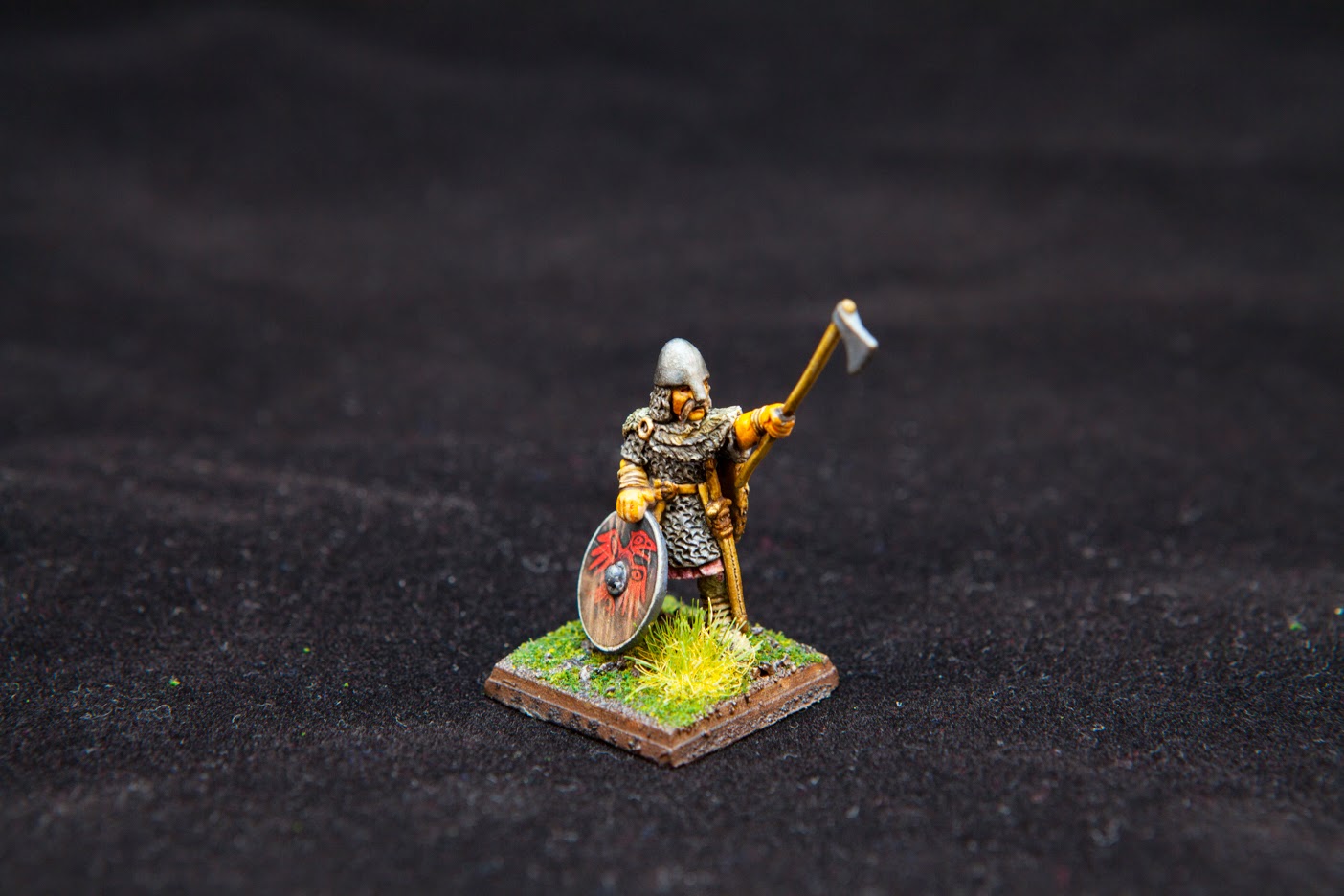Owen and
John came over today and we played a homebrew scenario of Bolt Action.
Mike showed up as well to help drink beer and cheer-on the combatants. This game was an experiment in asymmetrical force structures, asymmetrical terrain placement, and less-than-certain information about the game, the opposition, and victory conditions. The intent was to develop a realistic scenario that emphasized orders analysis, planning, and realistic tactics, while it de-emphasized artificial gamesmanship.
The scenario was based on real events from the afternoon of 6 June 1944 when a platoon from B Company, 116th Infantry regiment (US), augmented with remnants of a platoon from A Company, 5th Rangers tangled with counterattacking forces from the 916th Grenadier Regiment (German) as the Americans started to push inland from the beach landings around Vierville (Omaha Beach). There were no tanks in this engagement when it happened, but we added some since we are still trying to learn the rules.
Each player was given an Army-style OPORD that assigned them tactical mission tasks and provided a commander's intent, but stopped short of detailing the game conditions that would lead to victory. As the GM, I tied these tactical mission tasks and commanders intent to victory point values which I revealed to the players following the game.
The general force distribution shook-out thus:
US (1064 Points)
2/B/116 IN [regular] HQ section; 2 squads; sniper section (404 Points)
1/A/5 RGR [veteran] HQ Section; 1 squad; forward observer section (425 Points)
1xM4 Sherman Tank 76mm [regular] (235 Points)
All US forces entered the game on turn 1 through the woods in the upper left of the picture below. Their objective was the area around the crossroads in the bottom center of the picture below. Their task was to control this intersection, which meant that they needed to finish the game with at least one unit within range of the intersection (or an FO within line of sight). They also received their commander's intent, which tasked them with preserving 75% of their forces at the end of the battle.
German (1620 Points)
First Wave 2/2/916 GR [regular] HQ section; 3 squads (309 Points)
The first wave deployed 2 squads with ambush orders (hidden setup with MG-42 locations marked on the player's map) and held 2 squads in reserve. The reserve squads were allowed to roll to enter the game as soon as the first shots were fired. The mission of the first wave was to defend/retain the crossroads.
Second Wave-began rolling to enter game on turn 4
3/2/916 GR [regular] HQ section; 4 squads(437 Points)
Third Wave-began rolling to enter game on turn 5
2/916 HQ [regular] Captain; FO; Panther Tank; Stug III; Captured American M3 [inexperienced] (874 Points)
The mission of the second and third wave was to destroy the American forces.
Neither player knew the opposing player's mission, and neither player knew how many victory points each of their mission tasks was worth.
Owen played the Americans and moved his forces cautiously onto a completely empty terrain board. He knew that there were German forces hidden on the tabletop, but did not know where they were. Using some house rules for spotting, however, Owen was able to detect the two German squads before they were able to spring their ambushes. Fearing anti-armor forces (that were not deployed), Owen proceeded slowly against John's squads, giving the Germans a chance to reinforce their positions.
Playing the Germans, John was able to establish a very strong position among the hedgerows of the bocage, but reserve rolls held the tanks off the board for quite some time, preventing John from engaging in an all-out offensive against Owen's Americans. By the time the tanks did arrive, Owen had positioned his forces where he needed them in order to accomplish his mission goals.
The game featured two air strikes called-in by Owen, one of which went horribly wrong as a rookie pilot strafed Owen's sniper section instead of the German target. John's FO came late to the fight and never called-in a strike, while the German company commander never showed up at all (FUBAR-ed his reserve roll and ran). To add injury to insult, Owen's M4 scored an improbably vicious hit against John's Panther tank and popped the turret right off.
In the end, John was able to score 4 of 5 victory points, and Owen scored 3, which resulted in a draw.
The experiment was a success from my point of view. While hopelessly outmatched on paper, the US forces were able to stand against superior numbers due to the constraints placed on German reserves. This game required a GM (yours truly), but with a little work I think we can refine it to enable two opposing players to fight it without a GM. My takeaway is that asymmetric forces and terrain makes for a very entertaining and realistic game. Also, by carefully controlling the amount of information the players have regarding the game, their victory conditions, and their opponent, the excitement created by tension and uncertainty increases, and artificial gamesmanship gives way to tactical analysis and realistic game play.
John's Germans using the cover of the hedgerows
Owen's GI's move into a ruined church
Germans maneuvering for a good engagement
Germans overwatching Owen's Rangers and M4 advancing through the woods
BAR gunner firing through a gap in the wall of the church
John's Germans advancing to retain control of the road intersection
German infantry advances past the burning Panther tank
Rangers in the woods
End of the game











































.JPG)
.JPG)
.JPG)





